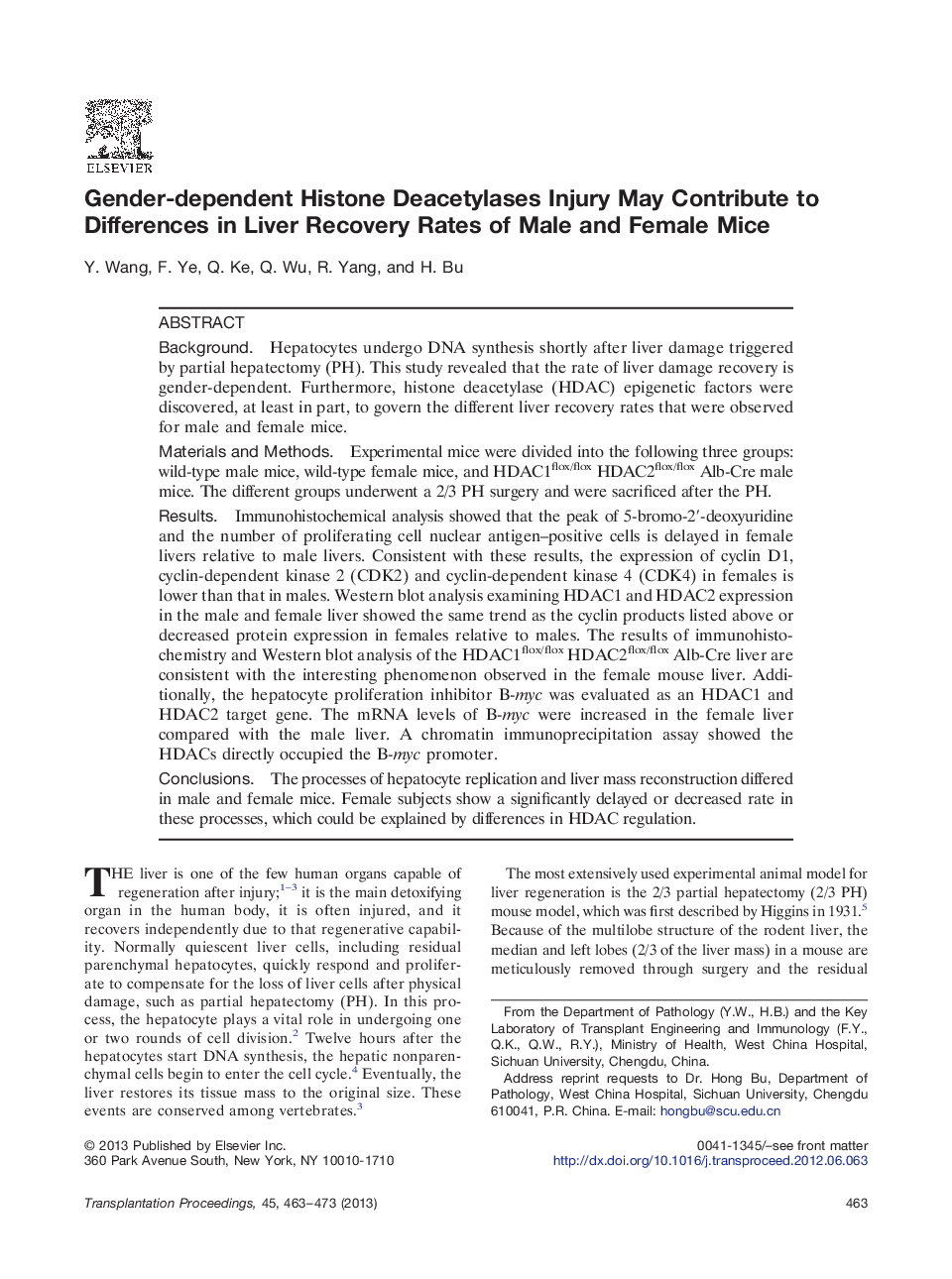| Article ID | Journal | Published Year | Pages | File Type |
|---|---|---|---|---|
| 4256126 | Transplantation Proceedings | 2013 | 11 Pages |
BackgroundHepatocytes undergo DNA synthesis shortly after liver damage triggered by partial hepatectomy (PH). This study revealed that the rate of liver damage recovery is gender-dependent. Furthermore, histone deacetylase (HDAC) epigenetic factors were discovered, at least in part, to govern the different liver recovery rates that were observed for male and female mice.Materials and MethodsExperimental mice were divided into the following three groups: wild-type male mice, wild-type female mice, and HDAC1flox/flox HDAC2flox/flox Alb-Cre male mice. The different groups underwent a 2/3 PH surgery and were sacrificed after the PH.ResultsImmunohistochemical analysis showed that the peak of 5-bromo-2′-deoxyuridine and the number of proliferating cell nuclear antigen–positive cells is delayed in female livers relative to male livers. Consistent with these results, the expression of cyclin D1, cyclin-dependent kinase 2 (CDK2) and cyclin-dependent kinase 4 (CDK4) in females is lower than that in males. Western blot analysis examining HDAC1 and HDAC2 expression in the male and female liver showed the same trend as the cyclin products listed above or decreased protein expression in females relative to males. The results of immunohistochemistry and Western blot analysis of the HDAC1flox/flox HDAC2flox/flox Alb-Cre liver are consistent with the interesting phenomenon observed in the female mouse liver. Additionally, the hepatocyte proliferation inhibitor B-myc was evaluated as an HDAC1 and HDAC2 target gene. The mRNA levels of B-myc were increased in the female liver compared with the male liver. A chromatin immunoprecipitation assay showed the HDACs directly occupied the B-myc promoter.ConclusionsThe processes of hepatocyte replication and liver mass reconstruction differed in male and female mice. Female subjects show a significantly delayed or decreased rate in these processes, which could be explained by differences in HDAC regulation.
